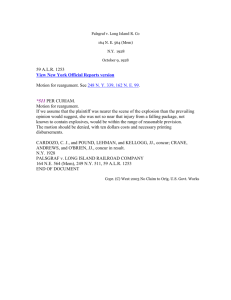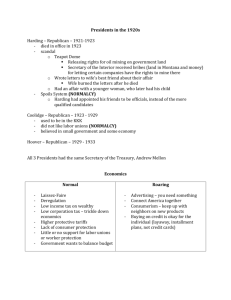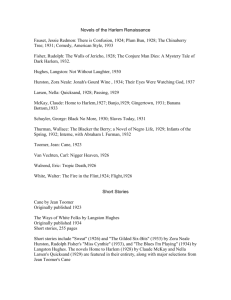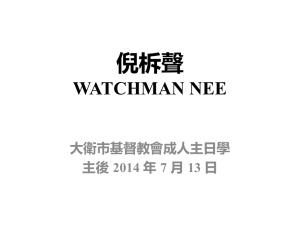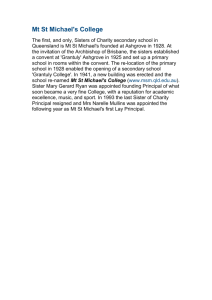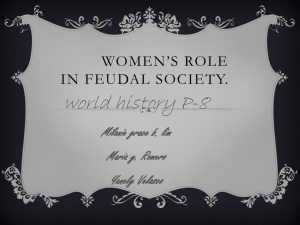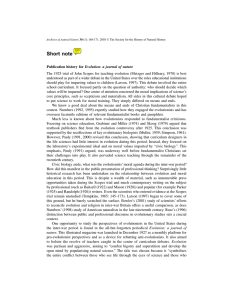The Great Turn
advertisement
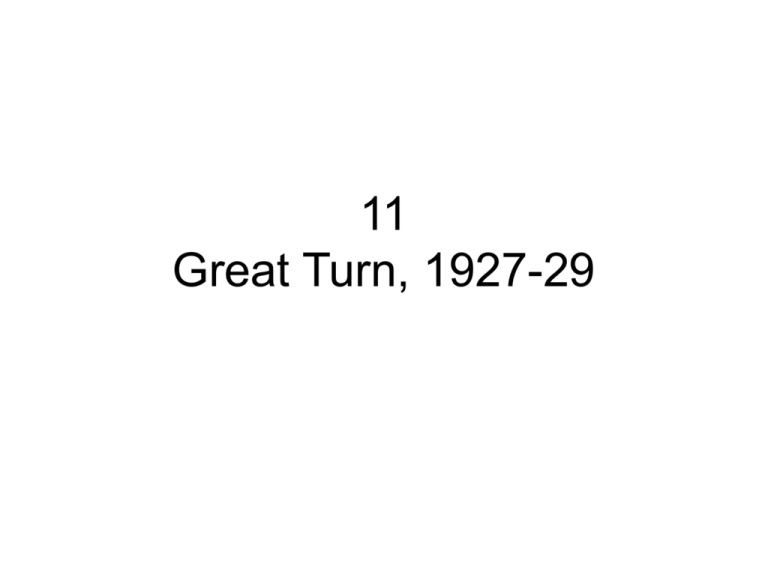
11 Great Turn, 1927-29 Overview A. B. C. D. E. Main Themes Why the “Great Turn”? Industrial Miracles Agricultural Crisis Culture: Revolution and “CounterRevolution” F. Conclusions A. Main Themes 1. Industrial miracle: phenomenal early gains of first five-year plan raised expectations 2. Agricultural crisis: grain delivery shortfalls as economic and political threat 3. Party radicalized, frightened, but holds little power over village 4. “Intensification of the class struggle”: perception, policy, Stalinist rationale 5. “Cultural Front”: conflict and confrontation B. Why the “Great Turn”? 1. Structural: Fundamental contradictions of NEP 2. Triggers: a. Grain crises of 1927-8, 1928-9 b. Party transformation c. War scare of 1927 3. The Great Turn: Denials C. Industrial Miracles 1. Toward a planned economy 2. Growth problems: low labor productivity, inept party management, rural crisis 3. Miracles on the “industrial front” 4. Western counter-model: from prosperity to depression D. Agricultural Crisis 1. Causes a. Land settlement of 1917-8 b. Family partition (semeinyi razdel) c. Market: productivity disincentives 2. 3. 4. 5. 6. Village Power Marxist sociology of the village State: Policy Shifts Grain crises, 1927-29 Great leap: “Ural-Siberian Method,” selftaxation, production campaigns 7. Peasant resistance Stalin, 14 January 1928 Telegram to Kosior “Many communists think that one cannot touch speculators and kulaks, since this will alienate the middle peasant. This is a rotten way of thinking up the rotten thought that some communists have in their heads. It is just the opposite. In order to establish our price policy and achieve a decisive turnaround in procurements, it is necessary to strike a blow at speculators and kulaks right away.” Stalin, 18 January 1928: Telegram to Novosibirsk Party Committee • “The only way one can make up for lost time is with brutal pressure. . . . We want to kill the seredniak’s faith in the prospect of a rise in grain prices. How? Article 107 [on speculation and hoarding]. . . . How does the middle peasant think? He thinks: ‘It would be good if they paid more, but here is a murky business. Petrushka is in jail; Vanushka is in jail; they’ll put me in jail too. No, it’s better to sell the grain. You can’t ignore Soviet power.’” Kulaks and Speculators Arrested (January-June 1928) Category Number Arrested Speculators (art. 107) 8,685 Kulak hoarders (art. 107) 6,211 Kulak counter-revolutionaries 3,383 Total 18,279 Peasant Protests: Proclamations and Resolutions Year Number of Proclamations and Resolutions 1928 945 1929 2,391 Peasant Protest Proclamation (1928) • Comrade Party Members! You are torturing the people, the Cossacks, and now the poor and middle peasants—they are NOT kulaks. Soviet power was created for proletarians. But you don’t see this, and you rob the unhappy poor and force them to pick up stakes and take back the bread and money from your pockets. You don’t treat us well; you rob us. If you don’t stop treating the poor this way, you’ll not rule for long…. If you don’t stop the requisitions, we’ll have to pick up our stakes and fall upon the Communists. Forms of Peasant Resistance Year Mass Disorder Arson 1925 Terrorist Act 902 Total 902 1926 31 71 640 742 1927 32 78 823 933 1928 709 307 1,153 2,169 1929 1,307 1,604 4,458 7,469 1930 13,793 6,324 7,469 27,586 E. Culture: Revolution and “Counter-Revolution” 1. Cultural “Construction”: Books, Press, Kino (film) 2. War on specialists 3. Anti-religious campaigns 4. Indigenization (korenizatsiia) and Nationalism Shakhty Trial Defendants May 1928 Shakhty Tribunal: Announces Sentences (1928) Enemies of the Five-Year Plan 1929 Poster Sergeiev-Posad: Destruction of Church Bells (1930) Protests against Church Closings Year Protest Resolutions Khodoki (Reps sent to Moscow) 1925 1,506 500 1926 1,248 600 1927 2,840 616 1928 2,861 946 1929 5,242 1,800 1930 17,637 6,029 F. Conclusions 1. Industrial surge: gains of first five-year plan and higher expectations 2. Agricultural crisis: grain delivery shortfalls as economic and political threat 3. Party radicalized, frightened, but little power over village 4. “Intensification of the class struggle”: perception, policy, and Stalin’s mantra 5. “Cultural Front”: construction, anti-religious campaigns, and nationalism
